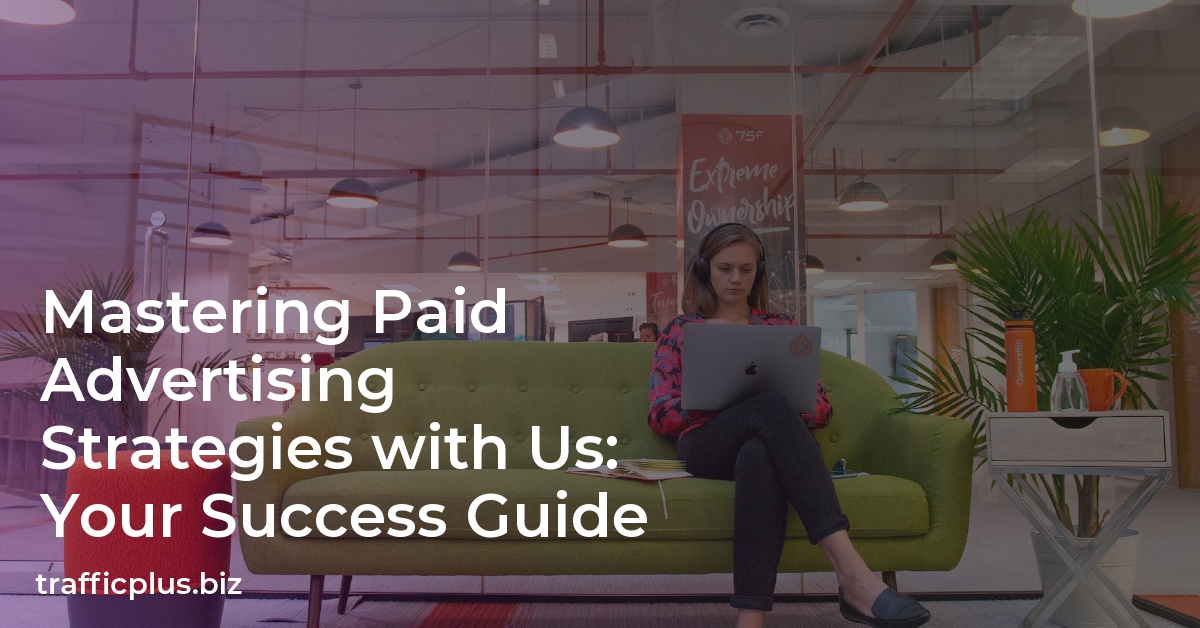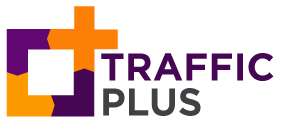
Welcome to our comprehensive guide on mastering paid advertising strategies, where we provide valuable insights and tips to help you achieve business success through effective advertising. With our expertise in paid advertising, we make advertising easy and effective, ensuring that your campaigns deliver measurable results and targeted reach.
The Benefits of Paid Advertising for B2B Companies
Discover why paid advertising is a game-changer for B2B companies, offering measurable results and targeted reach that can propel your business towards success. In today’s competitive digital landscape, paid advertising provides a powerful tool for reaching your target audience and driving meaningful business outcomes.
With paid advertising, B2B companies can achieve measurable results, allowing them to track the success of their campaigns and make data-driven decisions. By leveraging advanced analytics and tracking tools, businesses can gain insights into key performance indicators (KPIs) such as click-through rates, conversion rates, and return on ad spend. This data empowers companies to optimize their campaigns, ensuring their advertising budget is invested in strategies that deliver the best results.
Furthermore, paid advertising offers targeted reach, allowing B2B companies to connect with their ideal customers. Through sophisticated targeting options, including demographic, geographic, and behavioral parameters, businesses can ensure their ads are displayed to the right audience at the right time. This precision targeting not only improves the effectiveness of campaigns but also minimizes wasted ad spend by reaching only those individuals who are most likely to be interested in their products or services.
| Benefits of Paid Advertising for B2B Companies | Advantages |
|---|---|
| Measurable Results | Track and optimize campaign performance with data-driven insights. |
| Targeted Reach | Connect with your ideal customers and maximize ad effectiveness. |
| Increased Visibility | Stand out from competitors and improve brand recognition. |
Increased Visibility and Improved Brand Recognition
Another significant benefit of paid advertising for B2B companies is the increased visibility it provides. By investing in strategic advertising campaigns, businesses can stand out from their competitors and create a strong brand presence in the market. Whether it’s through display ads, search engine ads, or social media promotions, paid advertising helps to improve brand recognition among the target audience, increasing the likelihood of generating leads and driving conversions.
In conclusion, paid advertising offers numerous benefits for B2B companies, including measurable results, targeted reach, and increased visibility. By leveraging these advantages, businesses can elevate their marketing efforts, reach a wider audience, and drive meaningful business outcomes. To ensure the success of your paid advertising campaigns, it’s essential to adopt a strategic approach, continuously analyze performance metrics, and optimize your strategies based on data-driven insights. Explore the power of paid advertising and unlock new opportunities for growth and success in the B2B landscape.
Targeting Different Parts of the Marketing Funnel
In order to truly maximize the effectiveness of your paid advertising campaigns, it is essential to understand the significance of targeting different parts of the marketing funnel. By tailoring your ads to specific stages of the customer journey, you can increase the likelihood of conversions and drive better results for your business.
The marketing funnel consists of several stages: awareness, consideration, and conversion. Each stage represents a different level of customer engagement, and targeting the right audience at each stage can significantly impact your campaign’s success. Let’s explore how you can effectively target each part of the funnel:
Awareness Stage:
At the top of the funnel, your goal is to generate brand awareness and capture the attention of potential customers. To target this stage effectively, focus on reaching a broad audience with informative and engaging content. Utilize display ads, social media advertising, and video ads to create awareness and spark interest in your brand.
Consideration Stage:
Once potential customers are aware of your brand, it’s time to nurture their interest and move them further down the funnel. Targeting the consideration stage involves delivering relevant and educational content that showcases your products or services’ value. Use retargeting ads, email marketing campaigns, and search ads to maintain engagement and encourage further exploration.
Conversion Stage:
The bottom of the funnel is where the decision-making happens. At this stage, your ads should focus on driving conversions and prompting action. Utilize remarketing and dynamic ads to re-engage potential customers who have shown interest in your offerings. Use persuasive language, limited-time promotions, and clear call-to-actions to encourage conversions and drive sales.
| Marketing Funnel Stage | Targeting Strategy | Example Ads |
|---|---|---|
| Awareness | Reach a broad audience with informative content | Display ads, social media advertising, video ads |
| Consideration | Nurture interest with relevant and educational content | Retargeting ads, email marketing campaigns, search ads |
| Conversion | Prompt action and drive conversions | Remarketing ads, dynamic ads, persuasive language |
By targeting different parts of the marketing funnel, you can ensure that your paid advertising campaigns are reaching the right people at the right time. Remember to monitor your campaign’s performance closely, analyze key performance indicators (KPIs), and make adjustments as needed to optimize your results.
Investing in Branded Keywords
Unlock the power of branded keywords and learn why investing in them is a crucial aspect of successful paid advertising campaigns. When it comes to paid advertising, branded keywords play a vital role in increasing brand visibility, improving click-through rates, and creating a competitive advantage.
By bidding on your own brand name or specific terms related to your brand, you ensure that your ads appear prominently when users search for those keywords. This helps you maintain a strong presence in search engine results and increases the likelihood of attracting potential customers who are already familiar with your brand.
Investing in branded keywords is a cost-effective strategy, as the competition for these keywords tends to be lower compared to generic terms. With lower competition, you can often achieve higher ad positions at a lower cost-per-click. This means you can maximize your ad visibility while staying within your advertising budget.
Furthermore, branded keywords provide an opportunity to deliver highly targeted and relevant ads to your audience. You can tailor your messaging to highlight specific products, promotions, or unique selling propositions associated with your brand. This level of customization enhances the overall ad experience for users and increases the likelihood of conversion.
| Benefits of Investing in Branded Keywords | Why it Matters |
|---|---|
| Increased brand visibility | Ensure your brand stands out in search results, even when competitors are bidding on similar terms. |
| Improved click-through rates | Attract users who are specifically searching for your brand, resulting in higher click-through rates. |
| Competitive advantage | Secure top positions in search engine results and differentiate yourself from competitors. |
| Cost-effective advertising | Benefit from lower competition and potentially lower cost-per-click for branded keywords. |
| Targeted messaging | Customize your ads to highlight specific products, promotions, or unique selling propositions. |
Key Performance Indicators (KPIs) for Paid Ads
Understanding and tracking the right key performance indicators (KPIs) is essential to gauge the success of your paid advertising campaigns. These metrics provide valuable insights into the performance and effectiveness of your ads, enabling you to make data-driven decisions and optimize your strategies. Let’s take a look at some of the key KPIs to focus on:
- Click-Through Rate (CTR): This metric measures the percentage of users who click on your ad after seeing it. A high CTR indicates that your ad is engaging and relevant to your target audience.
- Conversion Rate: The conversion rate represents the percentage of users who complete a desired action, such as making a purchase or filling out a form, after clicking on your ad. It measures the effectiveness of your ad in driving desired outcomes.
- Cost Per Click (CPC): This metric calculates the average cost you pay for each click on your ad. Monitoring your CPC helps you manage your budget effectively and evaluate the cost-effectiveness of your ad campaigns.
- Return on Investment (ROI): ROI measures the profitability of your paid advertising efforts by comparing the revenue generated against the cost of running the ads. It provides insights into the overall success and financial impact of your campaigns.
Tracking and Analyzing KPIs
To track and analyze these KPIs, it’s crucial to utilize reliable analytics tools and platforms that provide detailed performance data. These tools enable you to monitor the metrics in real-time, identify trends and patterns, and make informed adjustments to your campaigns. Regularly reviewing your KPIs allows you to assess the effectiveness of your ad strategies and make data-driven optimizations for better results.
By focusing on the right KPIs, you can gain a comprehensive understanding of how your paid advertising campaigns are performing and make informed decisions to maximize their impact. Continuously monitoring and analyzing these metrics will guide you towards achieving your marketing objectives, driving business growth, and ultimately, boosting your return on investment.
| KPIs | Measurement | Importance |
|---|---|---|
| Click-Through Rate (CTR) | Percentage of users who click on your ad | Indicates ad engagement and relevance |
| Conversion Rate | Percentage of users who complete a desired action | Measures ad effectiveness in driving desired outcomes |
| Cost Per Click (CPC) | Average cost per click on your ad | Helps manage budget and evaluate cost-effectiveness |
| Return on Investment (ROI) | Revenue generated compared to ad costs | Measures overall campaign success and financial impact |
The Need for a Strategic Approach to Paid Advertising
Don’t leave your paid advertising success to chance – discover why a strategic approach is the key to unlocking its full potential. When it comes to running paid advertising campaigns, careful planning and effective execution can make all the difference in achieving your desired outcomes. At Traffic Plus, we understand the importance of a strategic approach and how it can maximize the impact of your ads, improve conversion rates, and ultimately drive better results.
One key aspect of a strategic approach is targeting different parts of the marketing funnel. By tailoring your ads to specific audience segments and stages of the buyer’s journey, you can capture their attention at the right time with the right message. This not only increases the chances of conversion but also ensures that your ad spend is optimized for maximum return on investment. We’ll show you how to identify the most relevant segments and create compelling ads that resonate with your target audience.
Investing in branded keywords is another crucial element of a strategic paid advertising strategy. By bidding on your own brand terms, you can increase brand visibility, improve click-through rates, and create a competitive advantage. Our guide will provide you with actionable tips on how to effectively leverage branded keywords in your campaigns and capitalize on the existing brand recognition you’ve worked hard to build.
Table 1: Key Performance Indicators (KPIs) for Paid Ads
| KPI | Definition |
|---|---|
| Click-through Rate (CTR) | The percentage of ad impressions that result in a click |
| Conversion Rate | The percentage of ad clicks that result in a desired action (e.g., purchase, sign-up) |
| Cost per Click (CPC) | The average cost of each click on your ad |
| Return on Ad Spend (ROAS) | The ratio of revenue generated to the cost of advertising |
Finally, our guide will help you understand and track the key performance indicators (KPIs) that determine the success of your paid advertising campaigns. By monitoring metrics such as click-through rate (CTR), conversion rate, cost per click (CPC), and return on ad spend (ROAS), you can gauge the effectiveness of your ads and make data-driven optimizations to improve results.
At Traffic Plus, we believe that a strategic approach to paid advertising is essential for achieving your business goals. Implementing the strategies and tips outlined in our guide will enable you to maximize your return on investment, drive targeted traffic to your website, and ultimately boost your business success. Get started on your journey to mastering paid advertising strategies with us today!
Maximizing ROI with Paid Advertising
Learn how to get the most bang for your buck with paid advertising by implementing proven strategies that maximize your return on investment (ROI). As we mentioned earlier in this guide, measuring key performance indicators (KPIs) is crucial for assessing the success of your paid ads. By closely monitoring metrics such as click-through rates, conversion rates, and cost per acquisition, you can identify areas for improvement and make data-driven decisions to optimize your campaigns.
In addition to tracking KPIs, refining your targeting parameters can significantly impact your ROI. By narrowing down your audience based on demographics, interests, and behavior, you can ensure that your ads reach the most relevant prospects. This targeted approach minimizes wasted spend and increases the likelihood of converting leads into customers.
A strategic approach goes beyond targeting and measurement. It also involves continuously optimizing your ad placement and messaging. Test different ad formats, headlines, and calls to action to determine what resonates best with your audience. By leveraging A/B testing and analyzing the performance of each variation, you can refine your ads and maximize their effectiveness.
| Maximize ROI with Paid Advertising | |
|---|---|
| Track key performance indicators (KPIs) to assess campaign success | |
| Refine targeting parameters to reach the most relevant prospects | |
| Optimize ad placement and messaging through A/B testing |
In conclusion, mastering paid advertising strategies requires a multifaceted approach that encompasses targeting, measurement, and optimization. By implementing these strategies, you can increase the overall effectiveness of your campaigns and achieve a higher return on investment. Remember, paid advertising is an ongoing process, so continuously monitor and adapt your strategies to keep up with changing trends and consumer behavior. With our comprehensive guide as your foundation, you are well-equipped to navigate the world of paid advertising and drive business success.
Conclusion and Next Steps
Congratulations on completing our comprehensive guide on mastering paid advertising strategies! Now that you have a solid foundation, it’s time to take action and apply these insights to propel your business towards success.
Throughout this guide, we have emphasized the benefits of paid advertising for B2B companies, highlighting how it can deliver measurable results and targeted reach. By targeting different parts of the marketing funnel and investing in branded keywords, you can increase brand visibility, improve click-through rates, and gain a competitive advantage.
As you embark on your paid advertising journey, it’s crucial to track key performance indicators (KPIs) that determine the success of your ads. By analyzing these metrics effectively, you can refine your strategies, optimize ad placement, and drive better results.
Remember, a strategic approach is key. By carefully planning your campaigns, conducting audience research, and implementing effective targeting, you can significantly improve the performance and return on investment (ROI) of your paid ads. Maximize your ROI by leveraging tactics such as refining targeting parameters, optimizing ad placement, and harnessing the power of data analysis.
Now that you’re equipped with these valuable insights, it’s time to put them into practice. Take the next steps and start implementing these strategies. Monitor your results, adapt your approach as needed, and continue your journey towards mastering paid advertising strategies. Remember, we’re here to support you every step of the way.

Lauren Richmond is a leading digital marketing expert at Traffic Plus, a dynamic firm dedicated to revolutionizing online presence for businesses of all sizes. With a deep passion for online growth and an expert grasp of cutting-edge marketing strategies, Lauren excels in crafting tailored solutions that drive meaningful website traffic.

